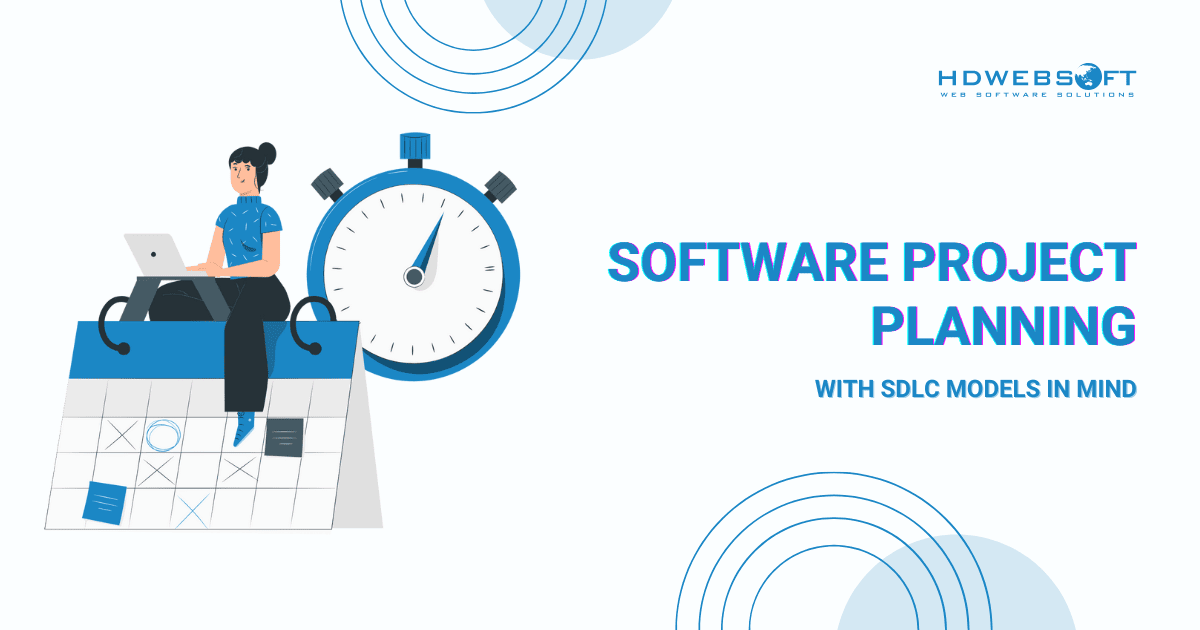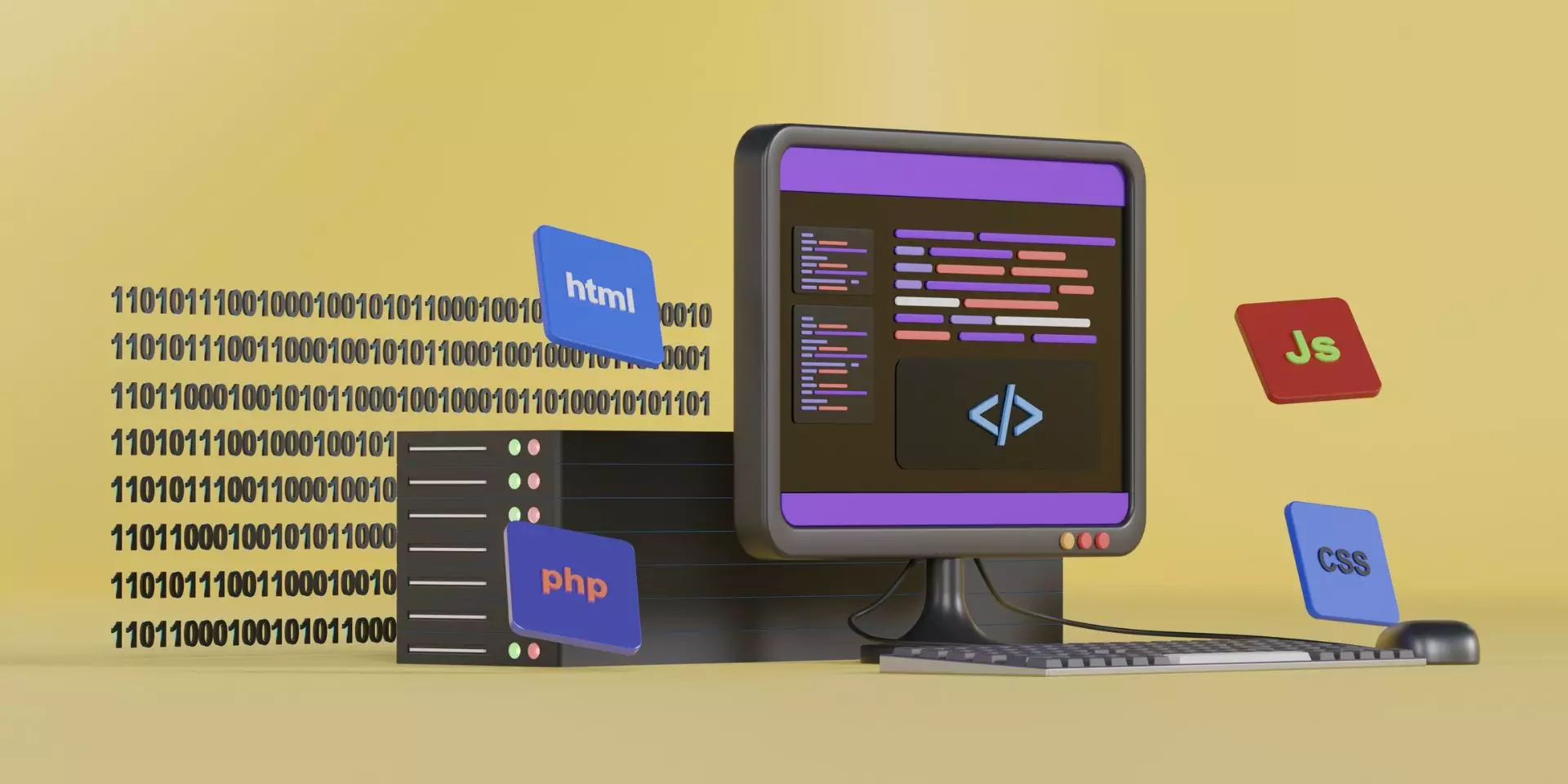
Software Project Planning with SDLC Models in Mind
The success or failure of any software development initiative, in-house or outsourced, hinges heavily on software project planning. A well-structured plan helps teams set clear goals, manage resources efficiently, reduce risks, and deliver value on time. Without a solid planning foundation, even technically sound projects can suffer from delays, budget overruns, or misaligned outcomes.
At HDWEBSOFT, we’ve spent over a decade refining our approach to software project planning, learning that no single method fits all. The right planning strategy depends on the chosen software development model, as each one brings its workflows, priorities, and challenges.
Software Project Planning with Agile Models
Scrum
At HDWEBSOFT, we apply the Scrum framework to organize software project planning in short, focused development cycles known as sprints. Each sprint typically lasts between one and four weeks. During this time, the team focuses on delivering a specific piece of functionality that is based on a user story.
Notably, these user stories describe the features from an end-user’s perspective or actions a user wants to perform. For example: uploading a photo, editing a video, or entering data into a database.
Who Participates in Planning?
An effective software project plan in Scrum involves a cross-functional team. This includes a project owner, a project manager, business analysts, a test manager, and both development and QA teams. Each participant brings valuable input to shape realistic goals and ensure alignment with user needs and business priorities.
How We Plan Each Sprint
Unlike traditional models, Scrum focuses on short-term, iterative planning. Here, we build a detailed plan only for the upcoming sprint, not for the entire project upfront. The scope of work for each sprint is selected from the product backlog. For those who don’t know, it’s a dynamic list of all potential features and ideas for the software solution.
Refining the Backlog Before Planning
Before sprint planning begins, the project owner conducts backlog grooming (also called refinement). This ongoing software project planning process involves:
- Adding new user stories to reflect evolving user or business needs
- Removing outdated or irrelevant stories
- Splitting overly large stories into smaller, manageable tasks
- Prioritizing items for upcoming sprints
At the start of each sprint, the planning team gathers to set a clear sprint goal. During this meeting, they finalize the scope of work, estimate the required effort, and define timeframes for delivery. In cases where user requirements are broad or abstract, business analysts may step in to clarify and break them down into actionable development and testing tasks.
Extreme Programming (XP)
XP is a software development model that applies traditional engineering practices at significantly intensified levels. While code reviews are widely accepted as a good practice, XP takes this further by promoting continuous code review through pair programming. This is a core method in the XP methodology.
In XP, software project planning is structured around releases. Each release is broken into short iterations that usually last about a week.
Who Is Involved in the Planning Process?
The planning process involves multiple key roles, including the project owner, project manager, and business analysts. The development and testing teams are also included.
The Planning Game in XP
In Extreme Programming, the software project plan is referred to as the Planning Game. Particularly, it is divided into two main stages: release planning and iteration planning. Both stages include three key phases: exploration, commitment, and steering.
The planning process
Stage 1: Release Planning
During the release planning phase, the team outlines the general requirements, along with time and budget constraints.
- Exploration phase: The project owner shares high-level requirements, which are then collaboratively transformed into user stories by the planning team.
- Commitment phase: Each user story is broken down into deliverable features, prioritized by value, and included in the release plan. The team also agrees on costs and delivery dates.
- Steering phase: The agreed plan is reviewed and adjusted as needed before final approval.
Stage 2: Iteration Planning
Next, the iteration software project planning focuses on defining specific tasks for the upcoming iteration. Unlike release planning, this stage does not involve the project owner.
- Exploration phase: The project manager converts the planned functionality into actionable tasks for developers and testers.
- Commitment phase: The manager estimates the time for each task and assigns them accordingly across the team.
- Steering phase: Tasks are updated or reassigned as needed to ensure no team member is overloaded.
Kanban
At HDWEBSOFT, we adopt the Kanban approach for planning software projects in ones that don’t follow defined iterations. Instead of fixed sprints, we break down project activities into small, manageable tasks that can typically be completed within a few working days.
Then, these tasks are assigned to specific team members and added to a Kanban board, where each column represents task statuses such as “To Do,” “In Progress,” and “Done.” As each task progresses, it’s moved from one column to the next by the responsible team member, creating a clear, visual workflow.
Participants in Kanban Planning
Kanban doesn’t require a dedicated software project planning phase. Instead, communication with the project owner happens continuously throughout the engagement. New requests and updates can be added to the Kanban board at any time, allowing for a flexible software project plan that adapts in real-time.
Typically, the planning team includes a project owner, a project manager, business analysts, and team leads from each discipline. Designers, developers, QA specialists, and others are also involved, depending on project scope.
How Tasks Are Planned and Managed
Based on input from the project owner, the project manager outlines tasks required to achieve short-term project goals. For instance, designers may work on landing pages for an eCommerce site. Meanwhile, developers build add-to-cart functionality, and QA specialists test usability. On occasion, a business analyst conducts an initial interview with the project owner to translate broad business needs into actionable requirements.
From there, team leads take ownership of the detailed software project planning task. They break down high-level tasks into smaller units that can be completed in one or a few days. After that, priorities are set in either high, medium, or low. Additionally, tasks are added to the Kanban board and assigned to team members for execution.
Planning Software Project with Linear Models
Waterfall
In the Waterfall methodology, planning a software project follows a strictly linear path. Surprisingly, despite its disadvantages and access to newer technologies, 22% of legacy software still uses the waterfall model as its primary software development approach. The project is broken down into distinct, non-overlapping phases: requirements analysis, system design, implementation, testing, deployment, and maintenance. Each phase must be completed in full before the next one begins, as the outcome of one becomes the input for the next.
Thus, this structured model is best suited for projects with clearly defined requirements and minimal expected changes. Unless a major issue arises, the process does not loop back to earlier stages.
Key Participants in Waterfall Planning
A Waterfall software project planning process involves several key roles, each contributing to shaping the foundation of the project. These include the project owner, project manager, business analysts, and a test manager. Their collaboration ensures that the entire project is fully scoped and documented before development begins.
Upfront Planning with Defined Phases
Unlike iterative approaches, the Waterfall method requires all project requirements and planning decisions to be finalized before any development work begins. HDWEBSOFT begins by crafting a plan that outlines the full sequence of activities, expected deliverables, and timelines for each phase. As a result, this ensures a clear roadmap from start to finish, minimizing ambiguity and facilitating efficient resource management.
Step-by-Step Planning Process
The process begins with the requirements analysis phase. This is where our business analysts consult with the project owner to understand the desired outcomes and gather detailed specifications. Using this information, the project manager constructs a linear workflow, documenting all major activities and deliverables in a structured plan.
This software project planning serves as a reference for the entire development cycle and supports consistent progress tracking and accountability.
Other Linear Models
While Waterfall is the most widely known linear method, several models follow a similar structured approach to project planning. These models also divide the project into distinct phases, where planning is done upfront or in controlled stages. The core idea remains the same: detailed planning guides the process, and changes are limited once execution begins. However, each model introduces its own variations in how planning is structured, reviewed, or adapted.
Below are the most notable models that share this planning foundation with slight but meaningful differences:
V-Model (Verification and Validation Model)
The V-Model is a direct extension of the Waterfall model, placing greater emphasis on testing activities. Each development phase is aligned with a corresponding test phase.
- Software project planning in the V-Model still happens upfront, but incorporates test planning alongside development planning.
- Each stage on the left side of the “V” has a matching validation phase on the right.
- This model ensures a strong focus on quality and verification from the beginning.
Incremental and Iterative Model
These models break the project into smaller, manageable parts that are planned and delivered in stages.
- The software project plan is divided into cycles, where each increment is planned separately but contributes to the overall system.
- The iterative aspect allows teams to refine and improve the product over time, based on feedback from earlier iterations.
- While more flexible than Waterfall, these models still rely on a clear roadmap and defined deliverables for each iteration.
Spiral Model
The Spiral Model combines structured planning with risk management and is ideal for large, high-risk projects.
- Each loop of the spiral includes planning, risk analysis, development, and evaluation.
- Planning occurs at the start of every cycle, meaning software project planning is both repeated and evolving.
- The emphasis on identifying and addressing risks early makes this model distinct. However, the overall process remains phase-based and controlled.
Rational Unified Process (RUP)
RUP is a framework-based model that blends elements of linear and iterative development.
- It divides the project into four phases: Inception, Elaboration, Construction, and Transition.
- Planning is adapted for each phase, with the most detailed software project plan occurring during the elaboration phase.
- RUP introduces iterations within each phase, allowing refinement, while still maintaining an overarching structured approach.
Where Planning Can Go Wrong
From our experience, planning a software project goes beyond simply following predefined steps. It also requires anticipating potential pitfalls. Because each development model has a unique planning structure, the challenges you may face will vary accordingly.
Common Agile Pitfalls
Agile methods emphasize short-term software project planning, which can unintentionally slow down overall project progress. While individual iterations may succeed, underplanning can delay the achievement of broader goals. To avoid this, we at HDWEBSOFT establish intermediate milestones, such as monthly objectives, and regularly review them.
Particularly, during a software project for a travel agency, we held daily scrum meetings to track progress and eliminate blockers. Our team also kept the client informed through weekly status calls.
Another common issue in Agile planning is the difficulty of estimating team capacity, especially for newly formed teams. Without an accurate understanding of the development and QA teams’ speed, sprints may run longer than expected. To counter this, we track team velocity from the very first sprint and use that data to refine planning for future iterations, minimizing the risk of timeline slips.
Linear Hurdles to Watch
For linear models, any change to software project planning often means reevaluating the entire scope of work and revisiting milestones. This can significantly extend timelines and increase costs. As to minimize this risk, we work closely with the project owner from the outset to identify all business needs. Our business analysts then carefully translate these needs into clear, actionable requirements that guide the software project plan from start to finish.
Another common pitfall in models like Waterfall is underestimating the time required for debugging. Even if thorough testing is included in the plan, low code quality can cause delays. That’s why we incorporate code quality checks throughout the project lifecycle, helping us stay on schedule and maintain high standards.
Which Software Project Planning Model Fits Best?
If you’re still uncertain about which approach suits your software development initiative, HDWEBSOFT is here to help. With over 12 years of experience, we can assist you through expert software development services. Whether to shape an effective project planning strategy or fully manage your project, we’re ready.














